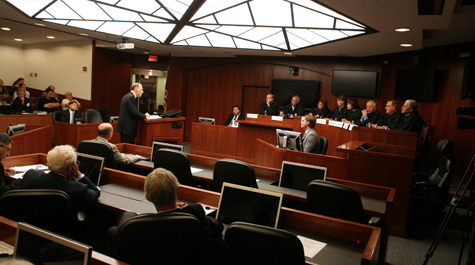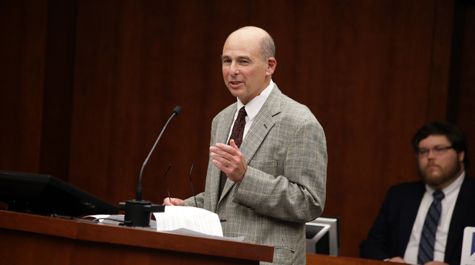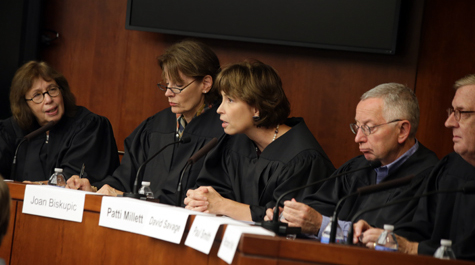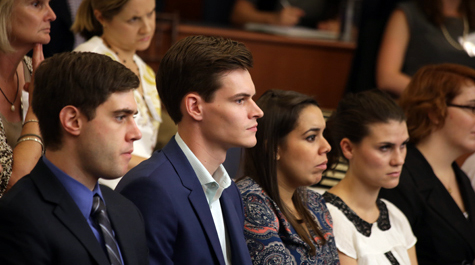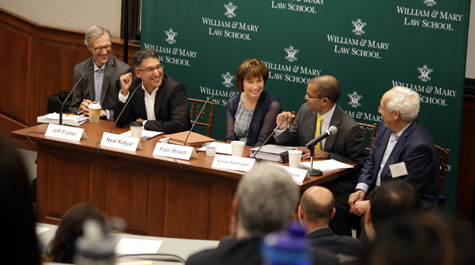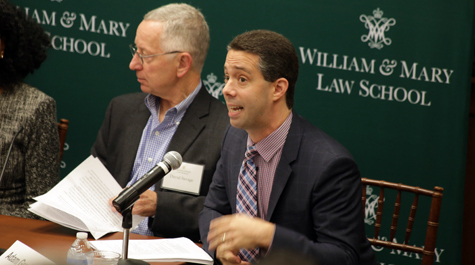Law School Hosts Scholars, Advocates and Journalists at 29th Annual Supreme Court Preview
As William & Mary Law School held its 29th annual Supreme Court Preview on September 23-24, lawyers, academics, and court journalists faced an unusual challenge while discussing the U.S. Supreme Court’s upcoming cases.
There was no way to tell what the court would even look like by the end of the term.
With one vacant seat on the Supreme Court, an equal balance of left- and right-leaning justices, and a presidential election in a little more than a month, many scholars noted that the court’s balance of power – and decades of jurisprudence – could shift based on the results of the election.
“This year’s preview was particularly interesting because there is such a sense of the unknown,” said Neal Devins, O'Connor Professor of Law and Director of the Institute of Bill of Rights Law (IBRL). The IBRL is responsible for hosting the Preview.
“Many top Supreme Court advocates have lived in a stable world because it has always had a consistent number of justices on each side,” he said. “That world could change.”
Held each fall just before the U.S. Supreme Court convenes, the Preview brings together legal scholars, lawyers, and court journalists from across the country to examine the cases scheduled to be considered by the Court in its upcoming term. This year, the Preview featured 17 Supreme Court advocates and eight court journalists. In addition, three law professors at William & Mary – Adam Gershowitz, Rebecca Green, and Tara Grove – served as panelists.
Some of the nation’s best advocates typically attend the Preview, and the advocates attending this year’s Preview have collectively argued more than 400 cases before the U.S. Supreme Court.
The first day of the Preview consisted of a Moot Court session. This year, the case was Pena-Rodriguez v. Colorado, a Supreme Court case that was later argued on October 11. Two moot court advocates – Christopher Landau of the law firm Kirkland & Ellis and David Strauss, professor of law at the University of Chicago School of Law – argued before a panel of mock judges about whether racial bias in jury deliberations violated the right to a fair and impartial trial.
After the session, the audience heard some thoughts about the case from Jeff Fisher, the attorney who would later represent Pena-Rodriguez at the Supreme Court.
As is often the case, many of the arguments and judges’ questions during the Supreme Court’s oral arguments closely mirrored those discussed at the Moot Court.
Most of the Preview’s second day consisted of panels that focused on specific legal topics, including business law, criminal law, civil rights and liberties, immigration law, and election law.
The Preview also had breakout lunch panels that discussed other issues of relevance to the court. This year, some of the sessions included discussions of the late Justice Antonin Scalia’s legacy and the implications of an eight-member court.
Although many audience members include attorneys and scholars, a significant number of William & Mary Law School students choose to attend the event in order to enhance their legal education.
“There are few opportunities to see so many experts come together to talk about legal issues,” said Austin Swink, a 3L student who is in a Supreme Court seminar class. “With only eight justices on the Court, this is a really interesting time right now.”
“If you are interested in the Supreme Court, this is the best place to learn about it,” said Devins.
About William & Mary Law School
Thomas Jefferson founded William & Mary Law School in 1779 to train leaders for the new nation. Now in its third century, America's oldest law school continues its historic mission of educating citizen lawyers who are prepared both to lead and to serve.
